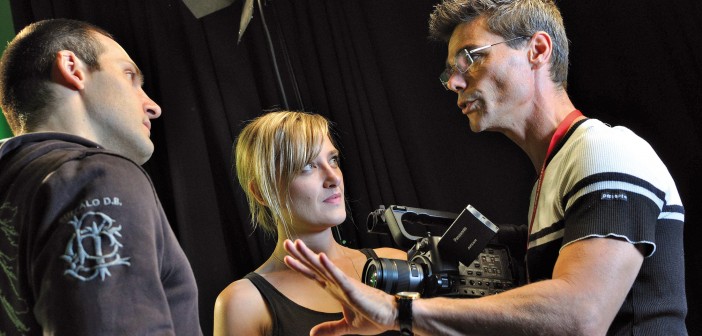So, you want to extend your filmmaking to new areas of finesse. Do you wish to capture shots with classical composure or do you wish to push into the actor’s realm? Let’s consider the potential influence on film from actor, director & performance guru Michael Chekhov (1891 – 1955).
Text: by Ian Dixon; Photos: Phil Wilkinson (Qantm Melbourne)
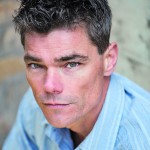
Ian Dixon is a pro-
fessional screenwriter, director and actor working in the Australian film and television industry. He has been funded by Film Victoria and Screen Australia and worked on most Melbourne-based
Television programs.
Chekhov was a highly intelligent and light-footed performer trained under Russian master Constantin Stanislavsky. Chekhov came to the attention of theatre audiences in Russia as a genius actor by 1913. He appeared in German film in the Weimar period and then acted in Hollywood in the 1950s under such outstanding directors as Ben Hecht and Alfred Hitchcock (Gordon in Chekhov, 1985).
For the actor, Chekhov builds upon the familiar areas of motivation and objective. This Stanislavskian tradition forms the basis for most 20th century acting on film (Naremore, 1988). However, Chekhov (1953) suggests the actor is a vibrant entity with a keen kinaesthetic presence.
Kinaesthesia is the ability to ‘move with sensation’ or the feeling of ‘muscular effort’ accompanying any ‘voluntary motion of the body’ (Dowd, 2006). Chekhov avoids the potential intellectualism of Stanislavsky’s approach by encouraging kinaesthetic awareness between actors thus liberating the creative unconscious of the performer. The process allows a present tense immediacy, crucial for filmic art and thus engaging the audience.
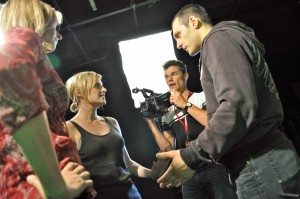 Chekhov’s exercises produce a rush of exhilaration (Gordon in Chekhov, 1985) and create greater awareness of other actors whilst allowing access to a deeper inner life (Chekhov, 1953). It is through this magnified awareness of bodily listening that Chekhov creates his most valuable exercise: spontaneous groupings (Sharp, 2002). Here a collection of actors improvise freely then instantly freeze in intricate patterns of interrelated gesture. The actors are effectively reading each other kinaesthetically in order to form tableaux of physical shapes. The resultant patterns emerge ‘at the same time without prearrangement’ (Chekhov, 1953, p. 43).
Chekhov’s exercises produce a rush of exhilaration (Gordon in Chekhov, 1985) and create greater awareness of other actors whilst allowing access to a deeper inner life (Chekhov, 1953). It is through this magnified awareness of bodily listening that Chekhov creates his most valuable exercise: spontaneous groupings (Sharp, 2002). Here a collection of actors improvise freely then instantly freeze in intricate patterns of interrelated gesture. The actors are effectively reading each other kinaesthetically in order to form tableaux of physical shapes. The resultant patterns emerge ‘at the same time without prearrangement’ (Chekhov, 1953, p. 43).
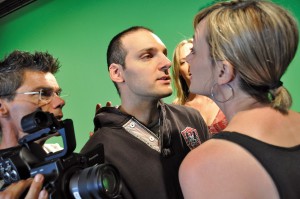 What does this mean to us filmmakers? For a start, it encourages us to rethink our approach to performance. Not merely as an exercise in conceiving images, but as a live kinaesthetic interaction with performers. Further, it allows our imagistic tableaux to arise from performance rather than be imposed upon it. Instead of thinking how we might design a performance for the camera, perhaps we might reverse our process here. If we allow the actor to perform, get excited about their performances then bring the cameras to capture the resultant dynamism in a new way, we might circumvent the static shot-reverse formula. We might let the actors be alive to the imaginative possibilities of the screenplay and integrate their kinaesthetic bodies accordingly. The screen now comes alive in a manner altogether engaging. As the great Orson Welles once intimated, the problem with film is it comes in cans and ‘it ain’t exactly fresh, is it?’ (Kiselyak, 2000).
What does this mean to us filmmakers? For a start, it encourages us to rethink our approach to performance. Not merely as an exercise in conceiving images, but as a live kinaesthetic interaction with performers. Further, it allows our imagistic tableaux to arise from performance rather than be imposed upon it. Instead of thinking how we might design a performance for the camera, perhaps we might reverse our process here. If we allow the actor to perform, get excited about their performances then bring the cameras to capture the resultant dynamism in a new way, we might circumvent the static shot-reverse formula. We might let the actors be alive to the imaginative possibilities of the screenplay and integrate their kinaesthetic bodies accordingly. The screen now comes alive in a manner altogether engaging. As the great Orson Welles once intimated, the problem with film is it comes in cans and ‘it ain’t exactly fresh, is it?’ (Kiselyak, 2000).
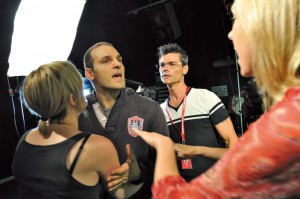 For the modern filmmaker, searching for spontaneity and meaning alike, this is an invaluable lesson. Kinaesthetic directors trust their own instinct for the generation of palatable performance. They allow visually compelling tableaux to arise via the available atmosphere (Chekhov, 1953). The contemporary action film and Australian television practices are beginning to incorporate such processes. The modern director might therefore exploit such techniques as a legitimate aspect of their dramatic work and visual language.
For the modern filmmaker, searching for spontaneity and meaning alike, this is an invaluable lesson. Kinaesthetic directors trust their own instinct for the generation of palatable performance. They allow visually compelling tableaux to arise via the available atmosphere (Chekhov, 1953). The contemporary action film and Australian television practices are beginning to incorporate such processes. The modern director might therefore exploit such techniques as a legitimate aspect of their dramatic work and visual language.
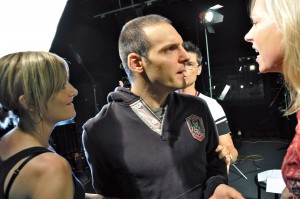 Reference List
Reference List
• Chekhov, M. (1953). To the actor. New York: Harper & Row, Publishers, Incorporated.
• Chekhov, M. (1985). Lessons for the professional actor. New York: Performing Arts Journal Publications.
• Dowd, I. (2006). Ideokinesis: The 9 lines of movement. Kinetics 1. Melbourne: Victorian College of the Arts, University of Melbourne.
• Kiselyak, C. (Producer/Director/Writer). (2000). A constant forge: The life and art of John Cassavetes [Motion picture]. United States of America: Castle Hill Productions & The Criterion Collection.
• Naremore, J. (1988). Acting in the cinema. United States of America: University of California Press.
• Watson, S. (1997). Spontaneous cinema? In the shadows with John Cassavetes. In J. Sergeant (Ed.), The naked lens: An illustrated history of beat cinema (pp. 55 – 68). London: Creation Books.

